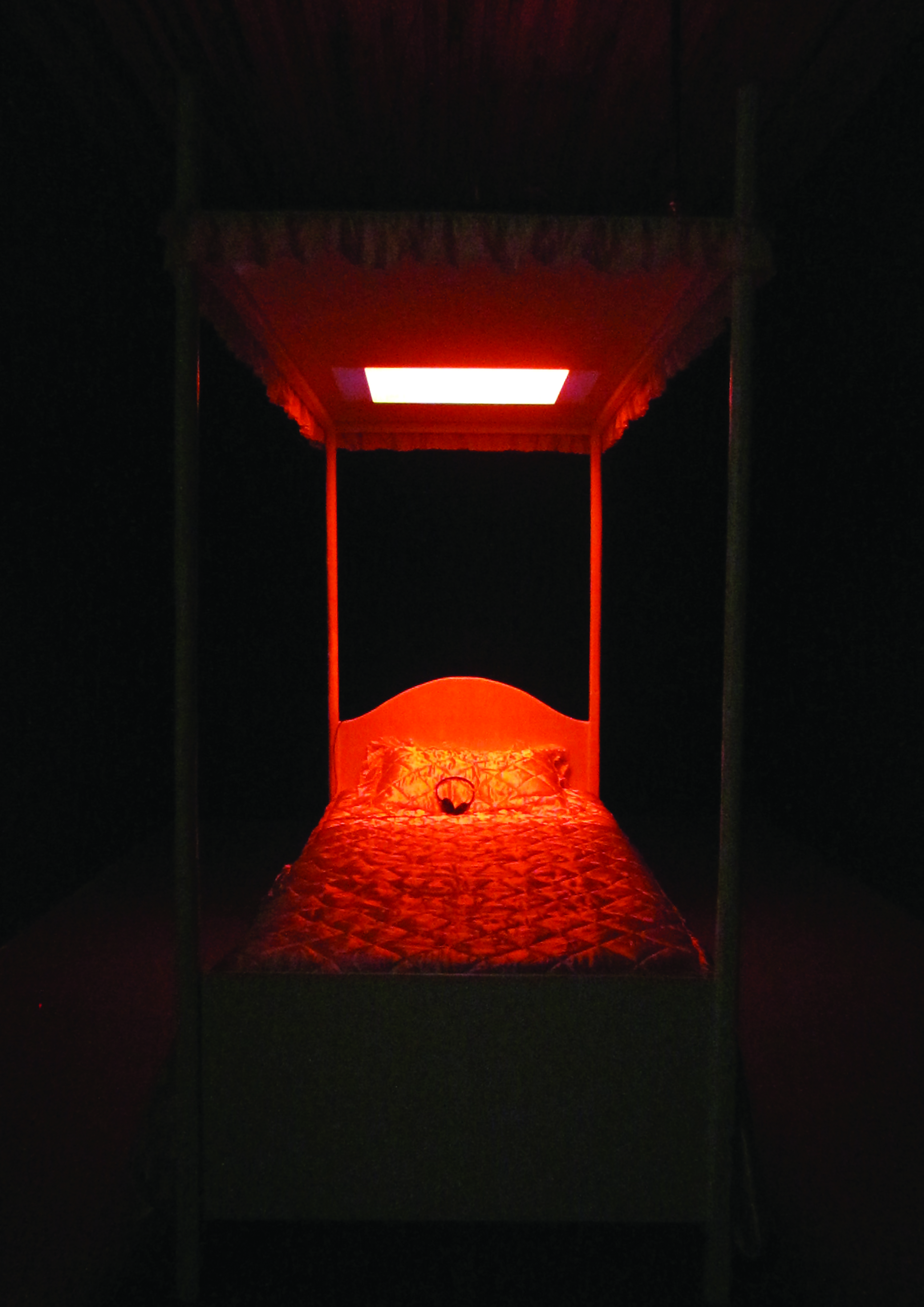The body of a girl has come to symbolize so much in our culture that it can sometimes be hard to explain what inhabiting that body can feel like. It can be a mess of contradictions, the internalized chaos that is created by mixed messages of purity and filth. The current exhibition Little Girl/Ugly Girl/Not Bad/Just Evil Girl by Ariel Smith—installed at Urban Shaman Contemporary Aboriginal Art—takes a self-described “tongue-in-cheek commentary on mankind’s fear-based demonization of women” through a video installation.
Smith’s installation is held in the Marvin Francis Media Gallery, which is separated from the main gallery by a wall. The room is painted black, and when you first enter the space, there’s a sense of uncertainty of what may be waiting in the darkness for you. In the centre of the black-walled room is a twin-sized bed with four posters and a canopy. The bed reminds me of pink, fluffy, Disney princess girlhood, with a lace-trimmed canopy and diamond-quilted pink satin blankets, and it is lit alternately in a cold, sterile white light and a demonic red glow.
Smith explains that in this installation, “Signifiers of innocence and archetypical girlhood are contrasted and warped by dark, ominous settings and aesthetics.” As I approach the bed, I see that there is a video being projected from above onto the underside of the canopy. A pair of headphones lies on the pillow, inviting the visitor to step into this world of twisted girlhood.
Beastly growls, pentagrams, and accusations of the evil sides of girlhood are shown in the glowing red, and interspersed with these frames are the heavily veiled descriptions of what to expect from sex, childbirth, and menstruation. The dialogue would be right at home in 1950s sexual education curriculum, while a diagram of a body shows little yellow arrows travelling from the head to the pelvic area. Many of the messages echo societal discomfort with menstruation, and the dismissal of the lived experience: It’s all in your head. Although the narrative centres on the body, it refuses to mention certain body parts explicitly, referring instead to “the space between your legs.”
The contrasts created by Smith in the space and the video can both send a chill up your spine and drive you to laughter. She states that, “My work is darkly humorous, campy, disturbing, visceral and unapologetically feminist.” The voice of the authoritative instructor—whether they are a doctor, nurse, teacher, or scientist—is taken out of context, and their message is rendered absurd.
Despite the absurdity, there is always a haunting residue, the evidence of what Smith calls the “internalized pressures that a patriarchal society forces upon women.” The narration concludes with a calm voice urging the listener to remember that “no matter how you feel, you have to live with people. You have to live with yourself,” and then fades into song. This simple phrase holds the same deep implications as many other directives for living as a girl that are repeated by strangers and the media in a tireless refrain: Be nice! Smile! Good Girl!
Although in the horror genre that Smith references so heavily, women may get to be—or are unwillingly portrayed as—the roaring beast, there is no place for those outbursts in lace-trimmed and pink satin girlhood. As a commentary on and subversion of icons and expectations of girlhood, Smith’s installation is thought-provoking, expertly crafted, and thoroughly amusing.
Little Girl/Ugly Girl/Not Bad/Just Evil Girl is showing at Urban Shaman until Oct. 19, and the opening reception is at 7 p.m. on Sept. 27, with an artist talk at 9 p.m. Read more at www.urbanshaman.org.


